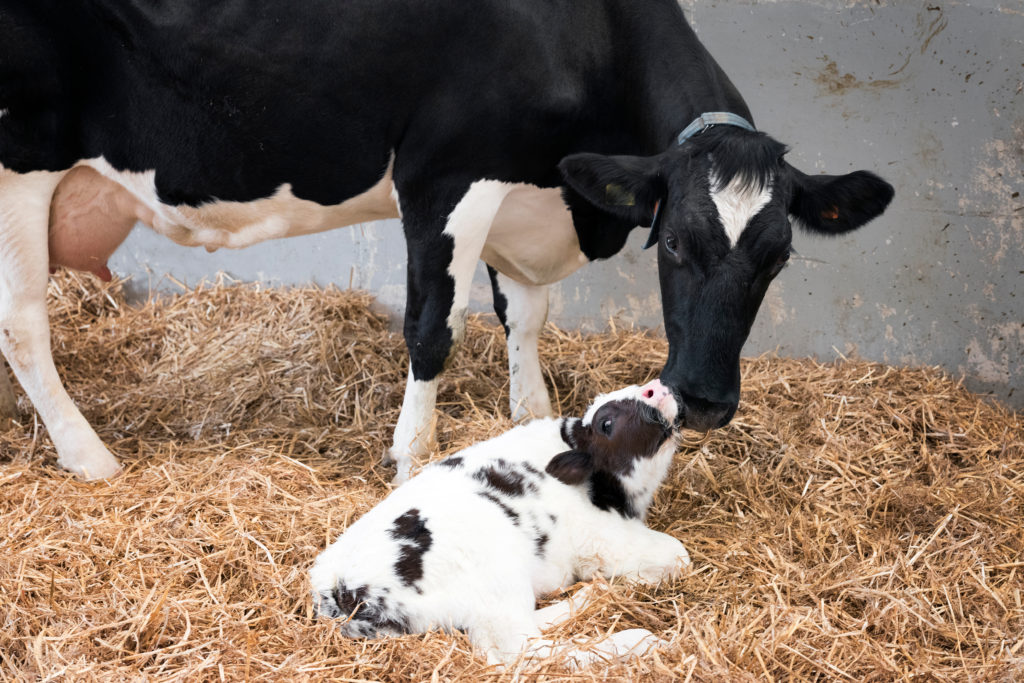The transition dry cow period is commonly regarded and backed by research to be our greatest opportunity to minimise feed costs, reduce complication risk, and increase production efficiency.
As the saying goes, it is better to have a sure thing now than a possibility of something later.
The starting point is to reflect on the pain points faced last calving time. With this refreshed in our minds, we can proactively plan to try and stop those challenges from occurring again.
Irrespective of system and management, here’s the impact of some of the most common profit-draining challenges that can arise from the transition period.
| Challenge area | Average cost per case |
| Milk Fever (clinical) | £200-£250 |
| Mastitis | £250-£300 |
| Lameness | £180 |
| Calving index | £5 per day over the calving index target |
| Pneumonia | £30-80 |
| Calf scours | £60 |
| Mortality | £200-£500 |
All costs referenced from AHDB
To increase efficiencies, cut costs, and reduce footprints, the best thing we can do at an individual level is to proactively look at what is within our control and capabilities.
Supporting a cow’s vital digestive, immune, and reproductive system – without added cost – is the key. The result – a more efficient cow, a more profitable business, and a more sustainable system.
The Countdown to Calving
It’s common knowledge that the transition period is the linchpin for lactation success. It also has a huge impact on the progeny of that cow. But getting it right is no easy feat.
Managing the dry cow period is multifaceted and highly dependent on many different factors – forage to name one of the most important and variable factors.
Here’s a simple means of breaking it down:
8-12 weeks to calving
Aim for a body condition score of 2.75 heading into drying off. Cows over 3.25 will likely face excessive condition loss at calving and subsequently reduced fertility. Cows under 3 have an increased risk of poor function. Energy levels will need to be carefully and gradually balanced and adjusted to hit targets before the critical dry period. NADIS offer a comprehensive guide on carrying this out. Aim for a BCS of 2.5 to 3 by the time they reach calving.

6-8 weeks to calving
Dry cows off to allow sufficient time for them to repair and prepare. For example, colostrum production begins 6-8 weeks prior to calving, peaking at 2-weeks pre-calving. Additionally, around 60 percent of all early lactation mastitis originate from the dry period. Compare your drying-off protocol to that of AHDB’s to check you’re on track.
Minerals and trace elements are essential at this stage to reduce the chances of health challenges such as retained cleansings, and to assist the calf with growth and development. Whilst carrying out the dry cow treatment, we advise proactively bolusing with Tracesure Cattle or Tracesure Cattle XL to ensure transition cows have ENOUGH of the vital micronutrients to support metabolic, immune, and reproductive health. Skip on to the below for more details.

1-3 weeks to calving
The nutrient demand of the rapidly growing foetal calf is now at its highest, and with dry matter intake (DMI) reducing rapidly due to less space for the rumen, it is important to make sure that you are supplying a moderately energy dense diet to make up for reduced intakes to help meet energy demands of the cow.
Consider separating cows into a ‘close calving pen’ to allow cows to be more comfortable and to help reduce stress.
If cows are more mature, are holding large or multiple calves, haven’t reached optimal BCS, and/or have a history of low calcium in previous calving’s, offer a dose of EasyCal+ Calcium Pouches or Easycal Calcium Capsules to reduce the risk of milk fever or sub-clinical calcium deficiency. Supplies 60% more calcium than other supplements of this type, in a palatable paste format. This can be dosed every 12-hours post-calving too.

At calving
Monitor cows closely for any retained cleansing (this should pass within 12–24 hours of calving), appetite and temperature. A cow’s ideal temperature is between 38.6-38.8 degrees centigrade.
Ensure you meet the energy and protein demands of a newly calved cow, which has now doubled from the pre-calving demand. This is vital in maintaining milk production, reducing the risk of negative energy balance, and promote an optimal recovery after giving birth – particularly in heifers. Consider rehydration powders to encourage water and subsequently dry matter intake.

1-week post-calving
Don’t take your finger off the pulse! Attention to the newly calved cow’s health is still vital, not only for this lactation but for the next. Providing your cows with a diet that meets energy, mineral and trace element requirements will allow your cow to get on track that will result in good yield, fertility, and performance.
Download the ANIMAX Countdown to Calving poster

How to build trace element reserves with precision
From drying off to early lactation, cows often experience a 25-40% ‘dip’ in immunity, making them more prone to the health challenges that get in the way of productivity.
One of the key reasons being that the unborn calf increases in weight and size by 75-80% during the last three months of pregnancy; impacting on ‘rumen fill’ and putting a greater pressure on the cow.
In most cases, forage alone does not offer enough trace elements to satisfy the needs of the cow and calf during the transition period. Cobalt, Copper, Iodine and Selenium are essential for the metabolic, immune, and reproductive systems to function properly.
Almost all forage is short in one or more of these essential trace elements, with the added complication that rumen space and appetite is limited by the growing calf.
Undersupply of trace elements can manifest as costly clinical or subclinical health and production challenges. Conversely, supplying more than enough will either by-pass what an animal can physically absorb or cause toxicity. Oversupply of trace elements is a waste of money and can be a risk to the environment.
When adding feed and feed supplements, we still can’t be sure every cow and unborn calf is getting ENOUGH all the time for optimal performance.
By proactively bolusing you 500kg+ cows with Tracesure Cattle XL, featuring patented diffusion technology that offers a controlled and consistent supply of the right trace elements in the right amounts, you can be sure that everyBODY is getting enough during the transition – no more or less, and no peaks or troughs.
Tracesure Cattle XL is the only bolus on the market that can offer ENOUGH trace elements at the above levels in one single application. Other boluses on the market require 2-4 times the applications for cattle weighing 500kg and over.
Here are the trace element inclusion levels:
| Trace element | Supply per day | Supply per bolus | Compared to other boluses |
| Cobalt | 2.8mg | ≈ 500 mg | 396-500mg |
| Copper* | 167 / 333mg | ≈ 30K / 60Kmg | 11.5-32Kmg |
| Iodine | 18.9 / 37.8mg | ≈ 3.4K / 6.8Kmg | 2K-5Kmg |
| selenium | 2.8 / 5.6mg | ≈ 500 / 1Kmg | 180-500mg |
*Tracesure with Copper supplies copper in the form of copper oxide needles manufactured in the ANIMAX production facility to ensure specific parameters for optimal bioavailability are met.
Bioavailability (the ability of the trace elements to be absorbed and used by the body) is as important as trace element volumes. Different boluses use different sources of trace elements, which can affect the bioavailability and therefore more isn’t necessarily more.
Tracesure Cattle has been scientifically formulated and engineered to ensure there are ENOUGH trace elements to supply the cow throughout a 6-month period in forms that are available to the animal and can be utilised effectively in the body.
For more information contact you local sales representative
Related: How to get ENOUGH essential trace elements into your ‘plus-size’ cows



Pingback: Are they getting enough to transition smoothly? - Carr's Group